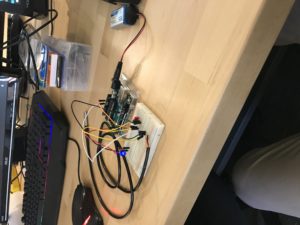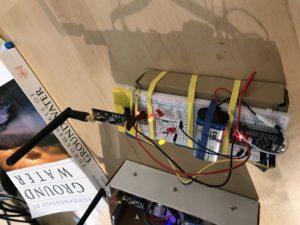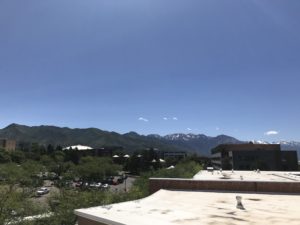Hi! My name is Andrew Winkelmann and I am from Ridgway, Colorado. I have the privilege of being a Pintern, and I am excited to share about my internship. My friend Sean and I are aiding Dr. Brian McPherson and the rest of the Carbon Science and Research Group (CSER) at the University of Utah. This team has been working hard for a very long time to find better and more efficient methods of storing CO2 so it is an honor to assist them.
The week started with a drive to Salt Lake City. Once we arrived in Salt Lake on Sunday, Sean and I settled into our logging and prepared for our stay. On Monday, we finished the necessary paperwork for our internship and then introduced ourselves to the group. The CSER team gave us an introduction to the work that we would be doing and themselves.
Our main task is to assist Adrien, an undergraduate and a part of the CSER, in detecting leaks of CO2. Storing CO2 underground has been used to decrease carbon emissions and it is vital to keep the CO2 stored and secure. So, the plan is to have a network of CO2 sensors set up in a grid. The sensors would receive data and transmit this information to a computer where the data would be formed into a map. This map will determine if there is a leak, where the leak is, and how big the leak is.
Working with Adriann and Aaron, a researcher who is currently studying different ways of detecting CO2 leaks, we will attempt to program and build a grid of sensors.
But first, we have to obtain the necessary skills in order to be of any help in this task, so on Tuesday we were given an introduction to Python and Arduinos. We were taught by Karthik, a computer scientist, what we needed to know about the Python Programming Language and Adriann gave us an introduction to Arduino micro controllers and the software needed to run them. After these two lessons, we began our first project: finding a way to take data from a sensor and have a python script sort the data to create a graph.
On Wednesday we were able to understand more about the goals of the team and the CSER group themselves through a team meeting. This meeting gave me insight on how many different professions and people had come together to form this group. This meeting also made me realize how intelligent and dedicated these people were in their work.
Thursday, I was able to mess around with the Arduinos and with the help of Aaron, create code to take data from the Arduino and print it in a format useful for analysis. I then started researching on how to use Python and one of its libraries, PySerial, to extract the sensor data and print it out into a CSV file.
On Friday, we tested the range of transmission from the RF modules that would send CO2 data to each of the sensors. We tested the range by putting the transmitter on top of the Union’s roof and then walking away from the transmitter, holding the receiver. We marked on a map where it began to pause and break up and got an idea of how far a part sensors would be placed in our grid. The range was much larger than expected, meaning we can cover more ground with the grid.
Through the week and this weekend, Sean and I have gotten to know our house mates better. Many of them are staying here longer than we are and it is interesting to get to know them because of their different backgrounds.
We have eaten at some of the coolest restaurants I’ve been to, and plan on celebrating our birthdays (Sean and I have the same birthday on the 23rd) by exploring Salt Lake.




wow so amazing andrew! keep it up buddy, cant wait for week2 blog!